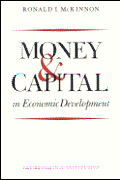Twenty years after Harvard Business School professor Michael Porter introduced the concept to the policy community and 10 years after its wide state adoption, clusters—geographic concentrations of interconnected firms and supporting or coordinating organizations—have reemerged as a key tool and rubric in Washington and in the nation’s economic regions.
After a decade of delay, the executive branch and Congress have joined state and local policymakers in embracing “regional innovation clusters” (RICs) as a framework for structuring the nation’s economic development activities.
At the state level, governors and gubernatorial candidates of both parties are maintaining or stepping up their longstanding interest.
And additionally, a broad range of business leaders, mainstream commentators, and policy analysts have been calling in the wake of the recent recession for a different kind of growth model that depends less on bubbles and consumption and more on the production of lasting value in metropolitan economies and the super-productive clusters within them.
All of which, at a moment of deep economic uncertainty, makes it appropriate to revisit the cluster paradigm and consider its special relevance at a moment of deep economic uncertainty, fiscal crisis, partisan gridlock, and necessary governance reform.
This paper finds that:
1. Clusters and cluster approaches hold out substantial attractions as the nation seeks to rebuild a damaged economy. Clusters, in this respect, have emerged as a major focus of economic and policy discussion just now by dint of their demonstrated practical impact, their value in paradigm discussions, and their potential utility in policy reform. Most notably:
-
-
Pointing to impact, new research confirms that strong clusters tend to deliver positive benefits to workers, firms, and regions.
It is now broadly affirmed that strong clusters foster innovation through dense knowledge flows and spillovers; strengthen entrepreneurship by boosting new enterprise formation and start-up survival; enhance productivity, income-levels, and employment growth in industries; and positively influence regional economic performance
-
As a matter of paradigm, clusters reflect the nature of the real economy.
Cluster frameworks, in this respect, highlight the real-world interactions, connections, transactions, and dealings of real firms after a period of delusion and over-simplification. For example, the cluster paradigm emphasizes the regional underpinnings of the national economy; highlights the unique variations and specializations that define productive local economies; and focuses attention on the myriad actors and the dynamics of their exchanges and interactions that give rise to new innovations and jobs. Clusters, in short, provide a timely and useful lens through which to clarify what matters in economic affairs
-
As a matter of policymaking, clusters provide a framework for rethinking and refocusing economic policy . The cluster paradigm, finally, yields practical insights that can help policymakers get their priorities right and maximize the impacts of their efforts at a time of constrained resources. Along these lines, cluster thinking appeals because it: puts the policy focus on regions; draws attention to the grainy, real-world dynamics of regional economies; takes into account the need for local discretion across regions and industries; and provides a vehicle for coordinating fragmented policy offerings to improve efficiency
-
2. When it comes to policymaking leaders at all levels should adhere to a set of core general principles when pursuing cluster-based economic development strategies. Regional innovation clusters are a fact of economic life, but their promotion through government or quasi-government initiatives must be pursued judiciously—through data-disciplined, targeted interventions. To guide such effort going forward at least six general watchwords bear consideration. Namely:
-
-
Don’t try to create clusters.
Clusters can’t be created out of nothing and cluster initiatives should only be attempted where clusters already exist. The preexistence of a cluster means that an industry hotspot has passed the market test. By contrast, efforts at wholesale invention will likely be fraught with selection issues, inefficiency, and probable failure and waste
-
Use data and analysis to target interventions, drive design, and track performance.
Cluster strategies or policy interventions—when attempted—should be grounded in rigorous empirical information and analysis so that decisionmakers can make objective assessments about the nature, competitive prospects, and specific needs of different regional industry concentrations. Cluster strategies also need to be held accountable so performance measurement is critical
-
Focus cluster initiatives on clusters where there is objectively measured evidence of under-capacity
. Work to upgrade an identified cluster should be tightly focused on attacking specific, documented constraints, institutional deficiencies, or resource shortcomings
-
Maximize impact by leveraging cluster-relevant preexisting approaches, programs and initiatives.
Specific, targeted cluster-oriented initiatives are clearly justifiable, but equal value and added impact may well come from drawing other, more generally relevant programs into the cluster orbit. For example, at the federal level programs like the R&D tax credit as well as SBI and SBTT grants, workforce training programs, and small business finance may all be rightly viewed as “cluster” programs, just as banking regulations, tax credits for venture capital, and education policy may be at the state level. In this way, “clusters” and cluster strategies are less a specific program than a framework through which to shape and coordinate disparate policies
-
Align efforts “vertically” as well as horizontally.
The cluster paradigm can—and should—be used to organize the disconnected policy offerings of any one level of government in service of clusters’ needs in a region, but it also provides a framework for coordinating them up and down the tiers of federalism to avoid policy conflict, redundancy, or missed opportunities for synergy
-
Let the private sector lead.
Clustering is a dynamic of the private economy in the presence of public goods. Cluster strategy should be pursued with humility as a matter of supporting, connecting, filling gaps, and removing obstacles to private enterprise while making sure certain public and quasi-public goods are available
-
3. While keeping these principles in mind, all tiers of the nation’s federalist system have roles to play in advancing the co-development a new cluster-informed stance in U.S. economic policy. At a time of near- and longer-term economic crisis, a rough division of labor among the levels of government can be envisioned:
-
-
Federal policymakers can provide a rich base of information and related foundational resources for cluster practitioners nationwide.
Going forward, the federal government should move aggressively to build the information base necessary for cluster activity and policymaking; create effective forums for best practice sharing; enhance the capacity of regional cluster intermediaries with planning and other assistance; employ cluster paradigms on major national challenges; coordinate disparate cluster-relevant programs; and ensure the overarching cluster effort is visibly prominent
-
State policymakers should strategically invest their own resources in cluster-led economic development.
States can make clusters a central component of economic development planning; target investments strategically to clusters of state significance; and adjust metropolitan governance to ease regional collaboration
-
Regional leaders should identify cluster challenges and coordinate cluster actors.
Regional intermediaries should work to identify and describe local clusters, identify their binding constraints, and facilitate regional joint action to implement needed exchanges and initiatives
Local policymakers should bring to tools to influence on-the-ground implementation of cluster-oriented economic development.
They should manage zoning and permitting issues to benefit the physical infrastructure in which clusters exist, and they should keep an eye out for the broader demographic and social context in which new industry clusters might form and to which existing ones must adjust
-
In sum, cluster thinking and cluster strategies have the potential to accelerate regional economic growth and assist with the nation’s needed economic restructuring, but they are more a paradigm than a single program. In that sense, the opportunities that a cluster policy framework provides for delivering impact, clarifying economic priorities, and coordinating disparate programmatic efforts will only grow more important in the coming era of intensified competitive pressures and tightened resources.
The Brookings Institution is committed to quality, independence, and impact.
We are supported by a diverse array of funders. In line with our values and policies, each Brookings publication represents the sole views of its author(s).











